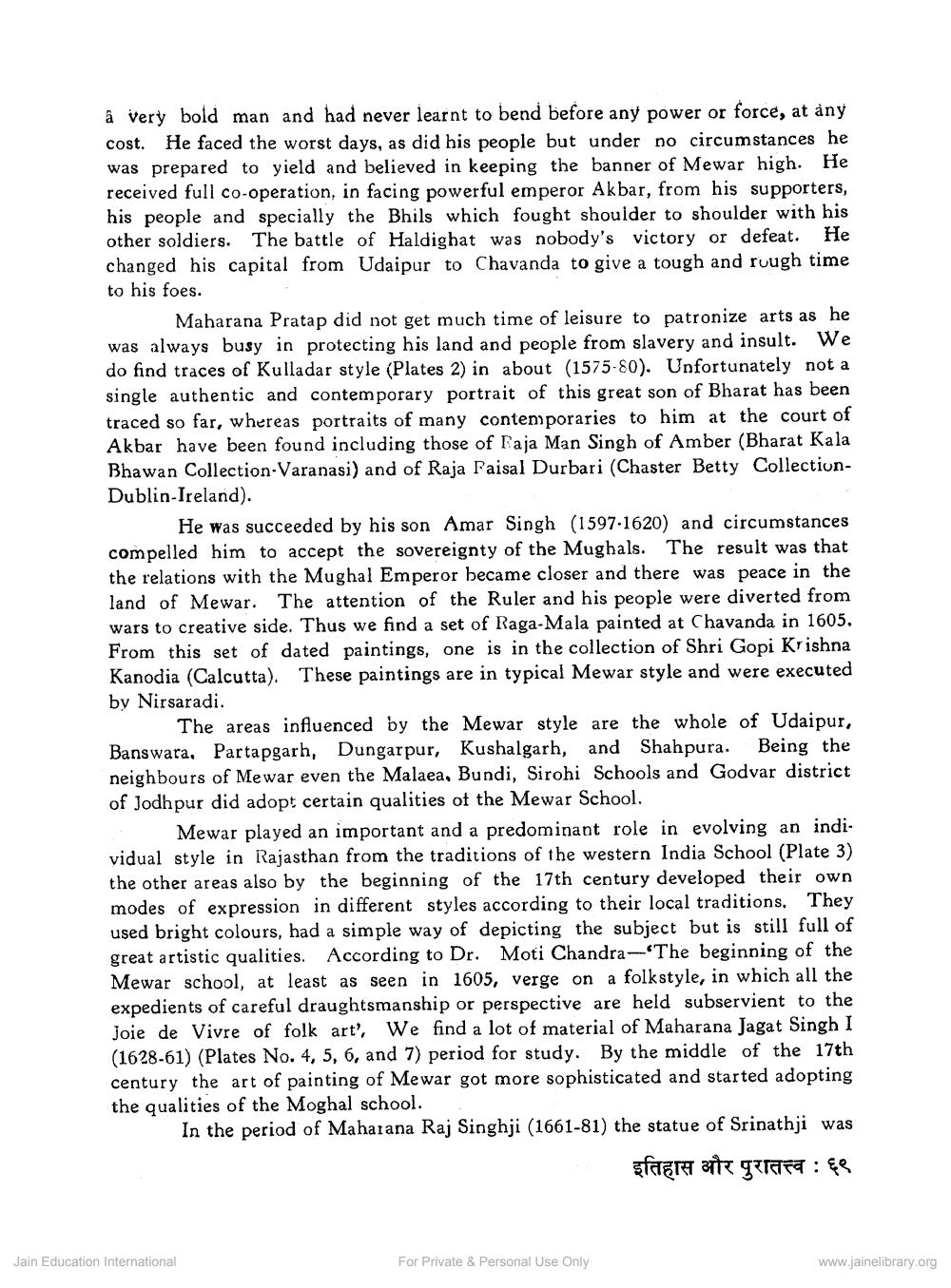Book Title: Mewar Painting Author(s): Kuwar Sangram Singh Publisher: Z_Nahta_Bandhu_Abhinandan_Granth_012007.pdf View full book textPage 2
________________ a very bold man and had never learnt to bend before any power or force, at any cost. He faced the worst days, as did his people but under no circumstances he was prepared to yield and believed in keeping the banner of Mewar high. He received full co-operation, in facing powerful emperor Akbar, from his supporters, his people and specially the Bhils which fought shoulder to shoulder with his other soldiers. The battle of Haldighat was nobody's victory or defeat. He changed his capital from Udaipur to Chavanda to give a tough and rough time to his foes. Maharana Pratap did not get much time of leisure to patronize arts as he was always busy in protecting his land and people from slavery and insult. We do find traces of Kulladar style (Plates 2) in about (1575-80). Unfortunately not a single authentic and contemporary portrait of this great son of Bharat has been traced so far, whereas portraits of many contemporaries to him at the court of Akbar have been found including those of Raja Man Singh of Amber (Bharat Kala Bhawan Collection-Varanasi) and of Raja Paisal Durbari (Chaster Betty CollectionDublin Ireland). He was succeeded by his son Amar Singh (1597.1620) and circumstances compelled him to accept the sovereignty of the Mughals. The result was that the relations with the Mughal Emperor became closer and there was peace in the land of Mewar. The attention of the Ruler and his people were diverted from wars to creative side. Thus we find a set of Raga-Mala painted at Chavanda in 1605. From this set of dated paintings, one is in the collection of Shri Gopi Krishna Kanodia (Calcutta). These paintings are in typical Mewar style and were executed by Nirsaradi. The areas influenced by the Mewar style are the whole of Udaipur, Banswara, Partapgarh, Dungarpur, Kushalgarh, and Shahpura. Being the neighbours of Mewar even the Malaea, Bundi, Sirohi Schools and Godvar district of Jodhpur did adopt certain qualities of the Mewar School. Mewar played an important and a predominant role in evolving an individual style in Rajasthan from the traditions of the western India School (Plate 3) the other areas also by the beginning of the 17th century developed their own modes of expression in different styles according to their local traditions. They used bright colours, had a simple way of depicting the subject but is still full of great artistic qualities. According to Dr. Moti Chandra-The beginning of the Mewar school, at least as seen in 1605, verge on a folkstyle, in which all the expedients of careful draughtsmanship or perspective are held subservient to the Joie de Vivre of folk art', We find a lot of material of Maharana Jagat Singh I (1628-61) (Plates No. 4, 5, 6, and 7) period for study. By the middle of the 17th century the art of painting of Mewar got more sophisticated and started adopting the qualities of the Moghal school. In the period of Maharana Raj Singhji (1661-81) the statue of Srinathji was इतिहास और पुरातत्त्व : ६९ Jain Education International For Private & Personal Use Only www.jainelibrary.orgPage Navigation
1 2 3 4 5 6 7 8 9
